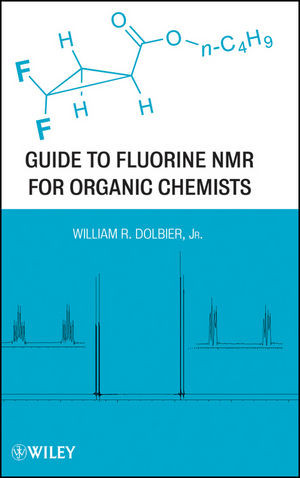

Most ebook files are in PDF format, so you can easily read them using various software such as Foxit Reader or directly on the Google Chrome browser.
Some ebook files are released by publishers in other formats such as .awz, .mobi, .epub, .fb2, etc. You may need to install specific software to read these formats on mobile/PC, such as Calibre.
Please read the tutorial at this link: https://ebookbell.com/faq
We offer FREE conversion to the popular formats you request; however, this may take some time. Therefore, right after payment, please email us, and we will try to provide the service as quickly as possible.
For some exceptional file formats or broken links (if any), please refrain from opening any disputes. Instead, email us first, and we will try to assist within a maximum of 6 hours.
EbookBell Team

4.1
50 reviewsGuide to Fluorine NMR for Organic Chemists provides a unique single source on both fluorine NMR and the impact of fluorine substituents on proton and carbon NMR spectra. Helping working chemists overcome the challenges associated with the synthetic methodologies of fluorinated compounds, this guide enables the effective use of these increasingly popular spectroscopic techniques to accurately characterize compounds that contain fluorine.
Following a thorough introduction of fluorinated compounds, chapters in the text cover:
With unparalleled depth and completeness, the coverage ranges from those compounds containing only a few fluorinated substituents, typically employed in pharmaceutical and agricultural applications, to more heavily fluorinated compounds.
Featuring NMR data for more than 1,000 specific compunds and including more than 100 exemplary spectra, Guide to Fluorine NMR for Organic Chemists gives the working chemist and advanced student an essential tool for understanding cutting-edge NMR techniques and interpreting the resulting spectroscopic data.Content:
Chapter 1 General Introduction (pages 1–7):
Chapter 2 An Overview of Fluorine NMR (pages 9–34):
Chapter 3 The Single Fluorine Substituent (pages 35–95):
Chapter 4 The CF2 Group (pages 97–135):
Chapter 5 The Trifluoromethyl Group (pages 137–175):
Chapter 6 More Highly Fluorinated Groups (pages 177–210):
Chapter 7 Compounds and Substituents with Fluoride Directly Bound to a Heteroatom (pages 211–232):